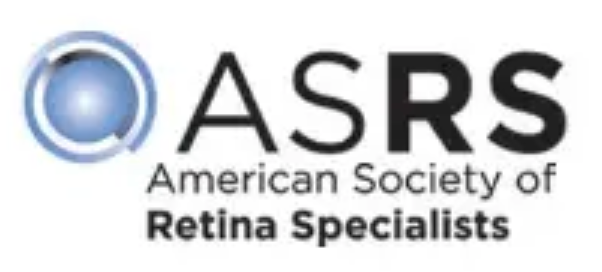Macular Degeneration
What is Macular Degeneration?
Macular Degeneration, also known as age-related macular degeneration (AMD), is a progressive eye condition that affects the central part of the retina called the macula.
The macula is responsible for sharp, detailed vision and is essential for reading, driving, recognising faces, and seeing fine details.
AMD is the leading cause of legal blindness and severe vision loss in Australia in people over 55.
How Does AMD Impact Your Anatomy and Health?
The impact of macular degeneration on anatomy and health is primarily centred around vision loss:
- Central Vision Loss: The central vision becomes blurred or distorted, making it difficult to see fine details, read, recognise faces, and perform tasks that require clear sight.
- Peripheral Vision: While peripheral vision remains largely unaffected, the loss of central vision can significantly impact daily activities.
- Colour Perception: Color vision might be less vibrant and accurate due to macula degeneration.
- Reduced Contrast Sensitivity: It becomes harder to distinguish between objects of similar shades, making it challenging to perceive subtle differences.
- Difficulty Adjusting to Changes in Lighting: People with AMD may struggle to adapt to lighting conditions, particularly low-light or high-glare situations.
- Increased Risk of Falls and Accidents: Reduced vision can increase the risk of falls and accidents, especially in unfamiliar environments.
Risk Factors for AMD
As AMD is related to aging, people over 55 are most frequently affected. There is a 2% risk of developing AMD for middle-aged people, which increases to approximately 30% for people over 75.
While macular degeneration is primarily associated with aging, several risk factors can increase the likelihood of developing the condition:
- The risk increases with age, particularly for individuals over 50.
- A family history of macular degeneration can increase your risk.
- Smoking is a significant modifiable risk factor for AMD.
- Caucasians are more prone to developing AMD.
- Certain genetic factors may contribute to an individual's susceptibility.
- Obesity can increase the risk of AMD.
- High blood pressure is associated with an increased risk.
- Prolonged exposure to sunlight, especially without proper eye protection, can contribute to AMD development.
- A diet low in antioxidants, vitamins, and minerals may increase the risk.
- Conditions like high cholesterol and cardiovascular disease can contribute.
Symptoms of Macular Degeneration
The symptoms of macular degeneration can vary depending on the type of AMD (dry or wet) and the stage of the condition. Common symptoms include:
- Blurred or Distorted Central Vision: The most common symptom is a gradual loss of central vision. Objects may appear blurry, distorted, or faded.
- Difficulty Reading: Reading becomes challenging, and words may appear broken or unclear.
- Difficulty Recognizing Faces: Faces may become difficult to recognise, as facial features are often processed in the central part of the retina.
- Dark or Blank Spots: A dark or blank spot may appear in the central vision, which can interfere with tasks that require clear sight.
- Colour Perception Changes: Colours may appear less vibrant or accurate.
- Straight Lines Appear Wavy or Curved: A common symptom of wet AMD is metamorphopsia, where straight lines appear distorted or wavy.
- Difficulty Adjusting to Low Light: Vision may be compromised in low-light conditions.
- Decreased Contrast Sensitivity: It becomes harder to distinguish between objects of similar shades.
Types of Macular Degeneration
Dry Macular Degeneration (Non-Neovascular AMD)
- This is the more common type, accounting for about 90% of AMD cases.
- It is characterised by the gradual breakdown of light-sensitive cells in the macula, known as photoreceptor cells.
- Small yellow deposits called drusen can accumulate in the macula. These drusen are made up of waste products from retinal cells.
- As the photoreceptor cells deteriorate and drusen accumulate, central vision becomes blurred and distorted.
- Dry AMD tends to progress more slowly than wet AMD.
Wet Macular Degeneration (Neovascular AMD)
- This type is less common but more severe in its impact.
- It involves the growth of abnormal blood vessels beneath the retina, a process known as neovascularisation.
- These abnormal blood vessels are fragile and can leak blood and fluid into the macula, causing rapid and severe damage to the central vision.
- Wet AMD can lead to sudden and significant vision loss.
- This type of AMD requires more immediate medical attention and treatment.
Treatment of Macular Degeneration
The treatment of macular degeneration depends on the type (dry or wet) and the stage of the condition. While there is no cure for macular degeneration, several strategies and treatments are available to help manage the disease and slow its progression.
Dry Macular Degeneration
No specific treatment can reverse the effects of dry AMD. However, certain interventions and lifestyle changes can help slow its progression and reduce the risk of advanced vision loss:
- Nutritional Supplements: Specific high-dose formulations of vitamins and minerals (known as the AREDS and AREDS2 formulations) have been shown to reduce the risk of progression to advanced AMD in certain individuals with intermediate or advanced dry AMD.
- Lifestyle Changes: Maintaining a healthy lifestyle, including not smoking, managing blood pressure and cholesterol levels, and eating a diet rich in antioxidants, vitamins, and minerals, can help overall eye health.
- Regular Eye Exams: Regular monitoring by an eye care professional is crucial to detect any changes in the condition and adjust treatment recommendations accordingly.
- Complement Inhibitor Injections: These are newer medications which will hopefully help slow the progression of geographic atrophy.
Wet Macular Degeneration
Wet AMD requires more immediate attention due to the potential for rapid and severe vision loss. The main treatment options for wet AMD include:
- Anti-VEGF Injections: The most common treatment involves injecting anti-VEGF (vascular endothelial growth factor) medications into the eye. These medications help inhibit the growth of abnormal blood vessels and reduce leakage, preserving and improving central vision.
- Laser Therapy: In some cases, laser therapy can destroy abnormal blood vessels. However, this approach is less common than anti-VEGF injections.
- Photodynamic Therapy: This involves a combination of a light-activated drug and laser therapy to target and destroy abnormal blood vessels.
What if Macular Degeneration is Untreated?
If macular degeneration goes untreated, it can lead to significant and irreversible vision loss, especially in advanced stages. Untreated wet AMD, in particular, can cause rapid and severe vision decline within a short period. Losing central vision can affect daily activities such as reading, recognising faces, driving, and performing tasks requiring clear sight.
Early detection and intervention are crucial to managing macular degeneration effectively. Even when no symptoms are present, regular eye exams can help identify the condition at its earliest stages, allowing timely treatment and lifestyle modifications to slow its progression. If you or someone you know is at risk for macular degeneration, it's important to consult an ophthalmologist to discuss preventive measures, early detection strategies, and appropriate treatment options.





